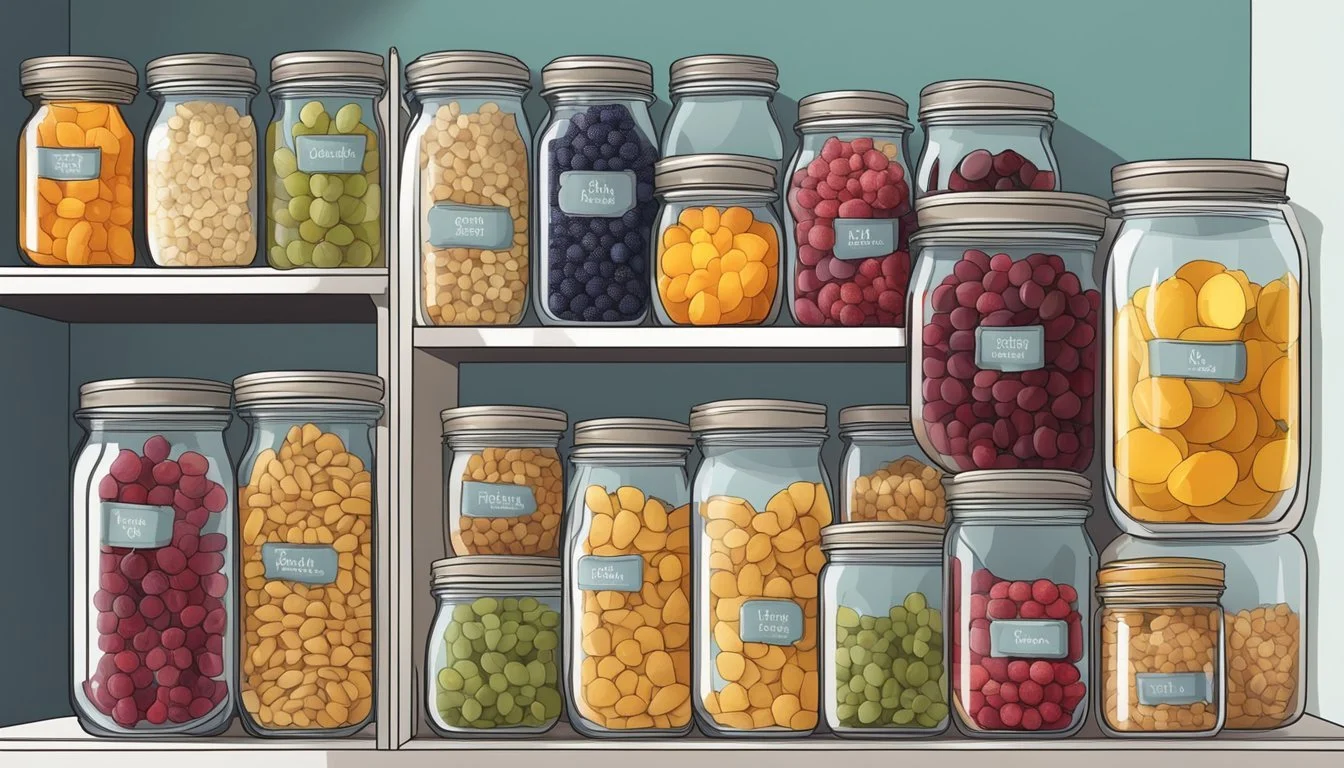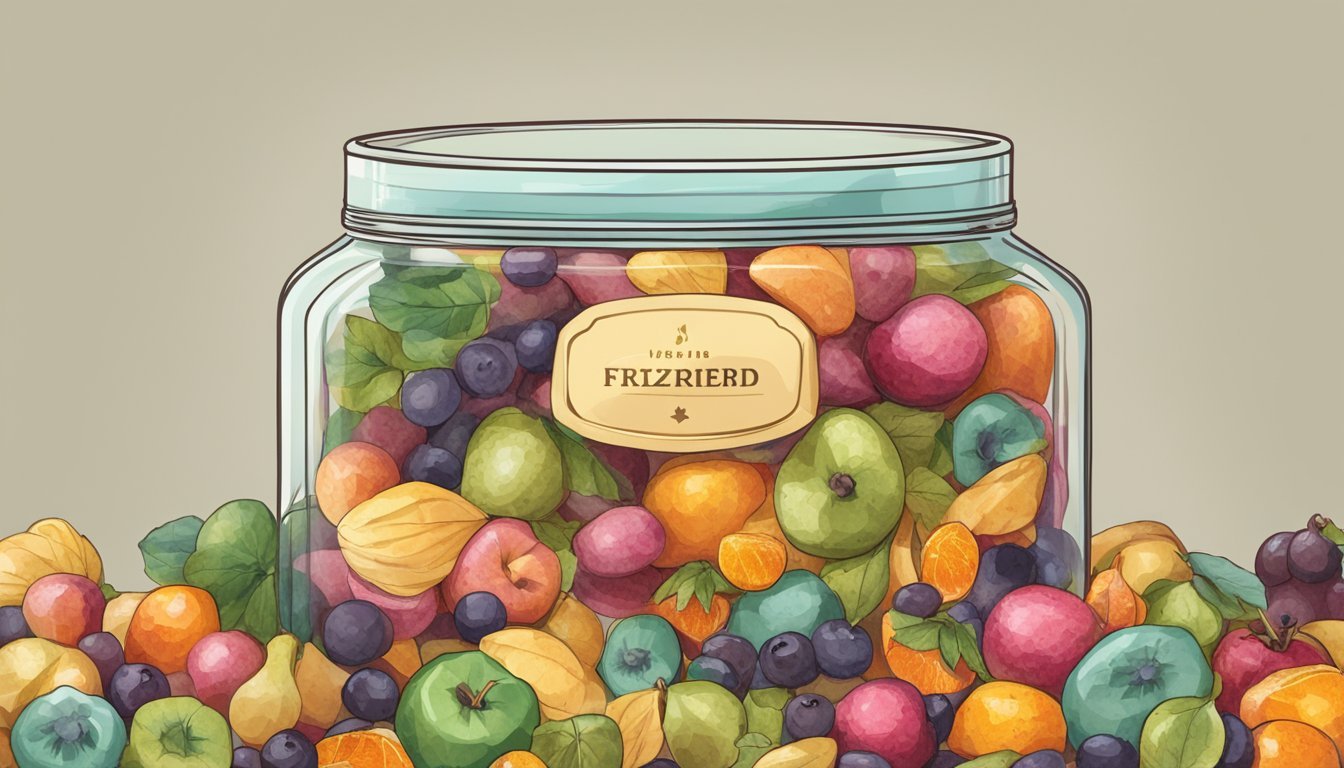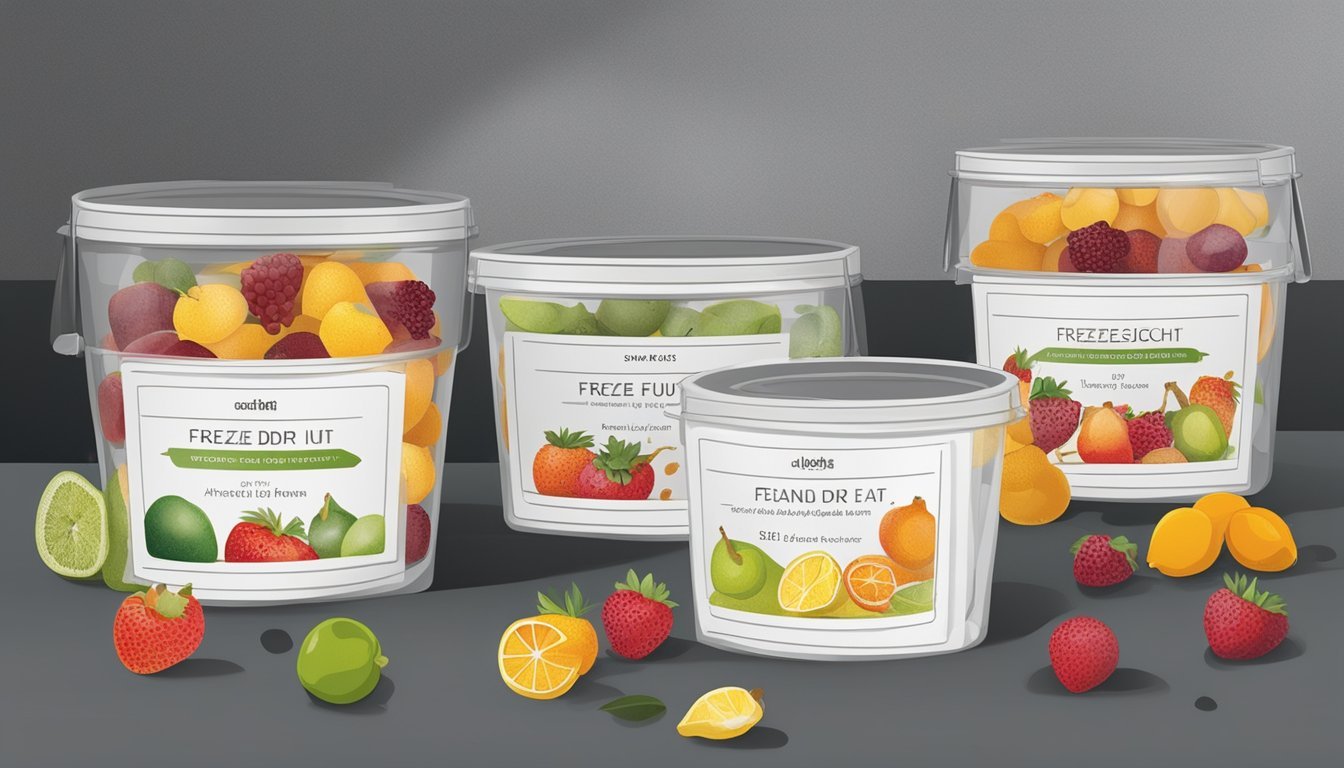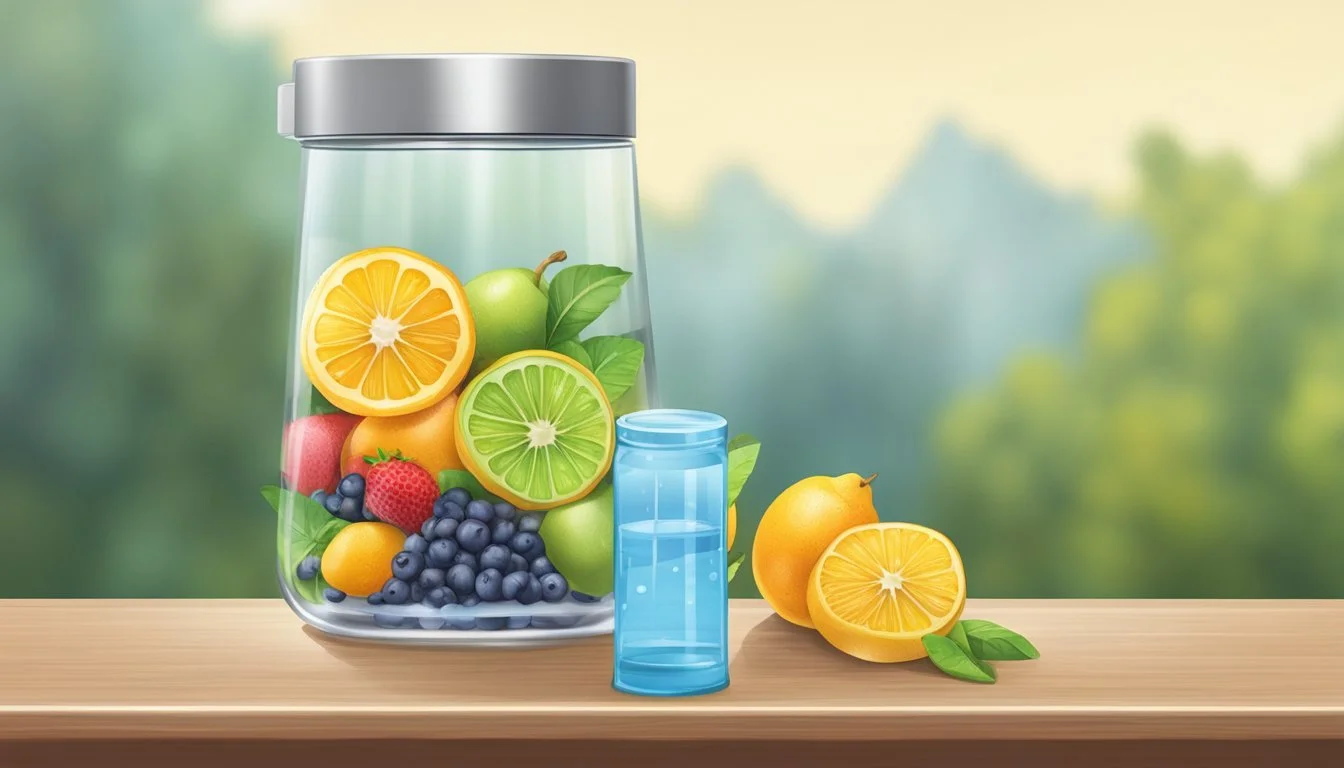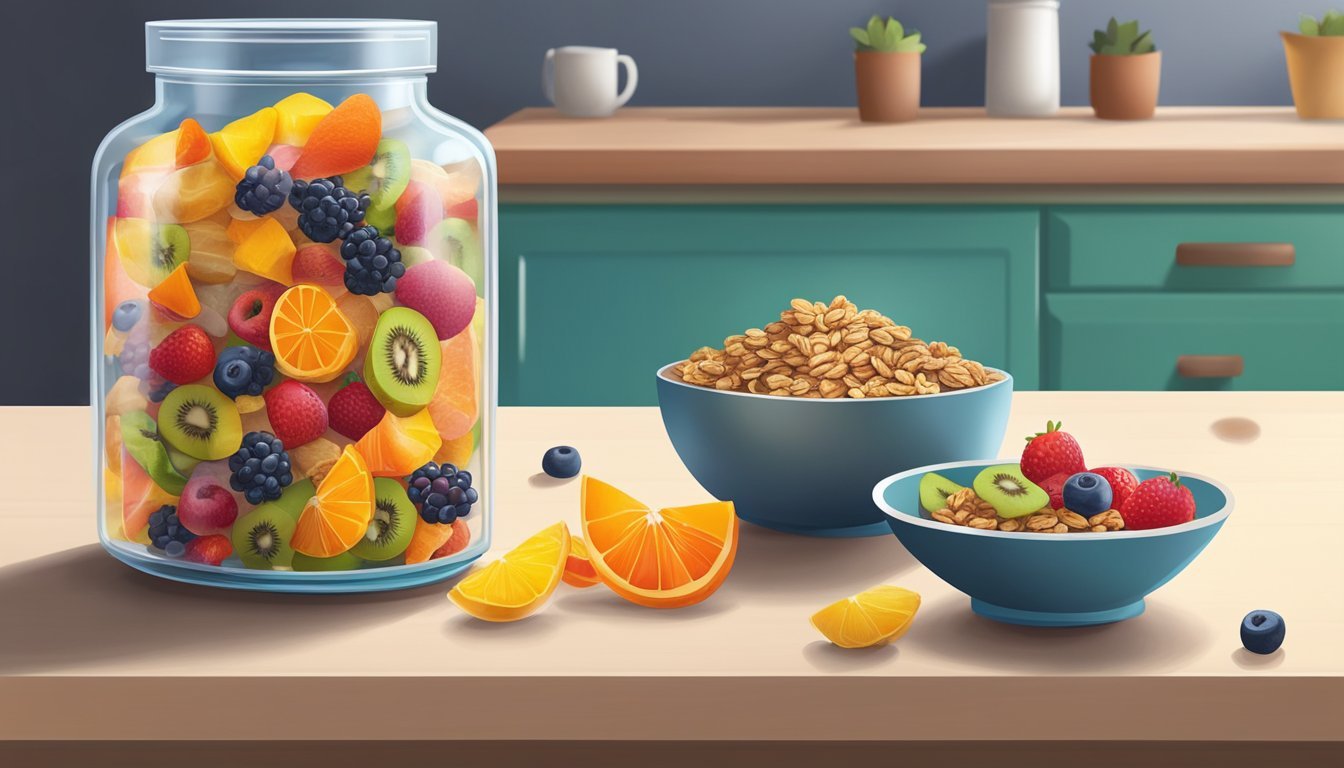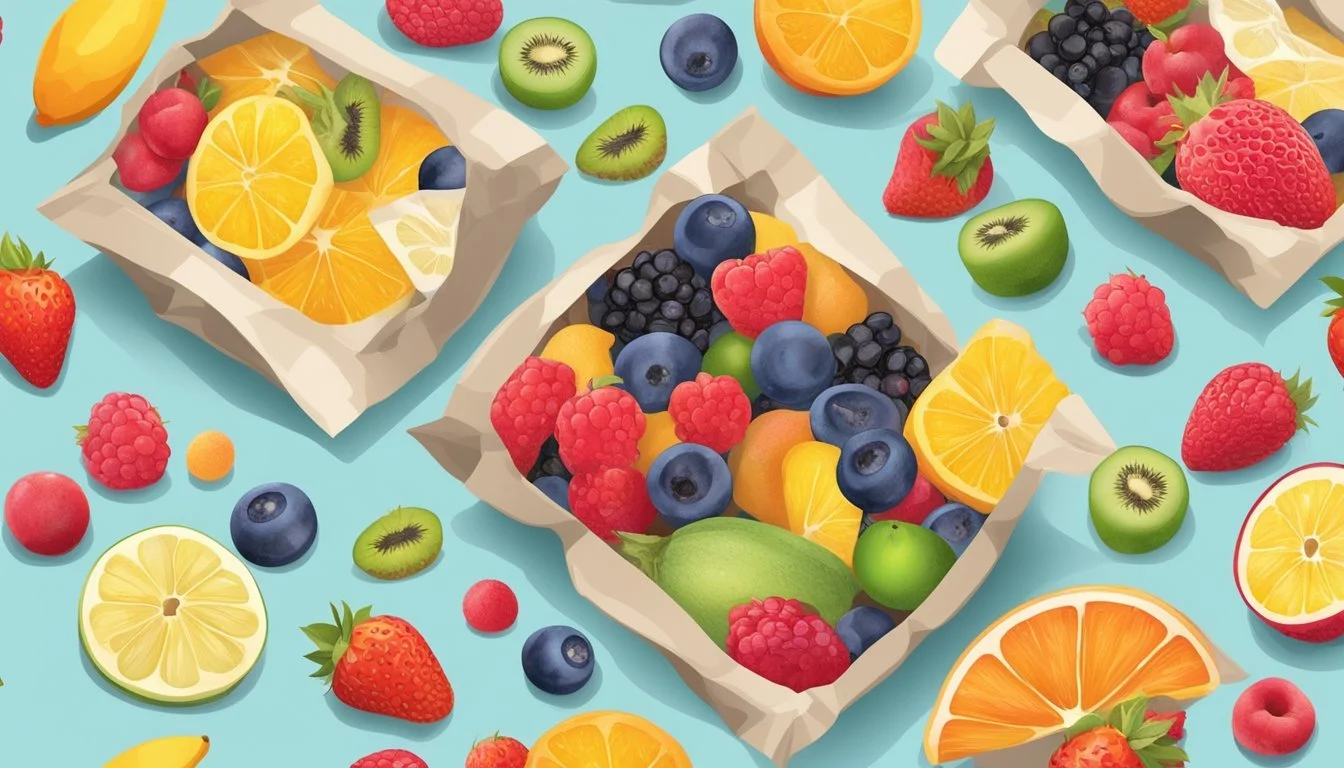How Long Does Freeze-Dried Fruit Last?
Shelf Life and Storage Insights
Freeze-dried fruit (What wine goes well with fruit?) is a popular choice for long-term food storage because of its extended shelf life. The freeze-drying process involves a low-temperature dehydration process that removes the majority of the water content from the fruit, which inhibits the growth of microorganisms and decay. The resulting product is lightweight, nutrient-dense, and can retain its quality for many years. When properly stored in a cool, dry place and in airtight containers, freeze-dried fruit can last up to 25 to 30 years.
The longevity of freeze-dried fruit makes it a convenient option not just for emergency food supplies but also for everyday snacking and cooking. Unlike dehydrated fruits (What wine goes well with fruits?) that usually last for up to four years, the much longer shelf life of freeze-dried fruits ensures that they retain the majority of their flavor, texture, and nutritional value over extended periods. This makes them an ideal inclusion in the pantry for those looking to maintain a stock of healthy snacks and ingredients that are readily available.
Moreover, the versatility of freeze-dried fruit is evident in its wide range of uses, from being eaten straight out of the package as a crunchy snack to being rehydrated for use in recipes. The variety of fruits that can be freeze-dried, including strawberries, apples, and bananas, means there's a broad selection to suit different tastes and culinary needs. As such, freeze-dried fruits are not only a reliable food source for future use but also a practical and nutritious option in the present.
Understanding Freeze-Drying
The freeze-drying process removes moisture from fruit, extending its shelf life significantly while preserving nutrients. This method involves low temperatures and vacuum pressure to achieve dehydrated food products.
Freeze-Drying Process
Freeze-drying, also known as lyophilization, is a method that removes moisture from fruit under low pressure and temperature conditions. Initially, fruit is frozen, and then placed under a vacuum, allowing the frozen water in the fruit to sublimate directly from ice to vapor. This process involves the following steps:
Pre-freezing: Fruits are frozen solid, which prepares them for the drying phase.
Primary Drying (Sublimation): Under vacuum pressure, the temperature is raised slightly, causing the ice to sublimate without transitioning to a liquid state.
Secondary Drying (Adsorption): Any remaining moisture is removed by increasing the temperature further, ensuring the removal of bound water molecules.
Temperature and pressure settings are critical in preserving the nutrients and physical structure of the fruit.
Advantages of Freeze-Drying
Freeze-dried foods offer several benefits over other drying methods:
Long Shelf Life: Properly preserved, freeze-dried fruits can last up to 25 years due to the removal of moisture, which inhibits the growth of microorganisms and enzymes that would otherwise lead to spoilage.
Nutrient Retention: The low heat used in the process helps to retain much of the fruit's original nutrients, flavors, and colors.
Lightweight and Portable: With most of the weight from water removed, freeze-dried fruits are lightweight and easy to transport, making them ideal for snacks and travel.
In summary, freeze-drying is a thorough dehydration process accomplished at low temperatures, involving a combination of freezing and vacuum application to extract moisture from fruit while maintaining its nutritional content.
Nutritional Value of Freeze-Dried Fruit
Freeze-dried fruits maintain high levels of nutrients, often comparable to their fresh counterparts. They undergo a dehydration process that preserves their vitamins and minerals, making them a healthy choice with a significantly extended shelf life.
Comparison to Fresh Fruit
Nutrient Density: Freeze-dried fruit is often comparable in nutrient density to fresh fruit. This is primarily because the fruits are picked at peak ripeness and immediately freeze-dried, which locks in the nutritional content.
Vitamins: The content of vitamins such as Vitamin C and Vitamin A remains substantially intact in the freeze-drying process.
Minerals: Essential minerals such as potassium and magnesium are well-preserved in freeze-dried fruits.
It's important to note that while the freeze-drying process retains most of the vitamins and minerals, the nutritional profile can be concentrated due to the removal of water.
Impact of Freeze-Drying on Nutrients
Preservation: The impact of freeze-drying on nutrients is minimal, which means that freeze-dried fruits retain almost all of their nutritional value.
Vitamins: Sensitive vitamins are mostly preserved through freeze-drying, unlike other drying processes that may degrade these nutrients.
Antioxidants: The antioxidants present in fresh fruit are largely maintained in freeze-dried fruits, contributing to their health benefits.
The nutrient retention in freeze-dried fruit makes it a nutritious and convenient option, as it provides essential vitamins and minerals without the perishability of fresh produce.
Proper Storage of Freeze-Dried Fruit
The longevity of freeze-dried fruit hinges upon proper storage methods that shield it from elements that can degrade its quality.
Storage Conditions
For optimal preservation, freeze-dried fruit should be stored in a cool, dark place like a pantry. The temperature should be consistent, ideally between 50 and 70 degrees Fahrenheit. Exposure to light can degrade the nutrients and color of the fruit over time.
Effect of Air and Moisture
Freeze-dried fruit is extremely sensitive to air and moisture; even small amounts can compromise its shelf life. It's imperative that the storage environment is not only cool and dark but also dry. Proper sealing is necessary to prevent moisture from infiltrating the food.
Packaging Options
Below are the best packaging options to ensure the longevity of freeze-dried fruit:
Airtight Containers: Perfect for everyday access to contents, they should be sturdy and completely airtight.
Mylar Bags: Coupled with oxygen absorbers, mylar bags provide an excellent barrier against light, moisture, and air.
Mason Jars: Ideal for smaller quantities, glass mason jars can be vacuum sealed and are impervious to air ingress when properly sealed.
In all cases, the inclusion of an oxygen absorber will significantly extend the preservation of freeze-dried fruit by removing air from the container.
Shelf Life of Freeze-Dried Fruit
Freeze-dried fruit offers an impressive shelf life due to its low moisture content, making it a popular choice for long-term storage. Factors such as storage conditions play a crucial role in determining its longevity.
Factors Affecting Shelf Life
Temperature: The life expectancy of freeze-dried fruit is heavily influenced by the temperature at which it is stored. Consistently cool environments significantly extend shelf life.
Packaging: Proper sealing and oxygen removal are critical to prevent spoilage. It is essential that freeze-dried fruit is stored in airtight containers with oxygen absorbers.
Exposure: Light and moisture can degrade the quality of freeze-dried fruit. Storing in dark, dry places is recommended.
Rotation: Regular rotation based on the label's expiration date ensures the fruit is used while at peak quality.
Average Shelf Life Estimates
Temperature Range: Estimated Shelf Life: Below 75°F (24°C) Up to 25-30 years Above 75°F (24°C) Reduced shelf life
Long-term Storage: When stored correctly, freeze-dried fruit can last up to 25 to 30 years at temperatures below 75°F (24°C).
Expiration Date: Always check the label for the manufacturer's expiration date to gauge the estimated shelf life of the product.
Food Storage: Rotating supplies according to dates ensures that no fruit goes to waste and maintains the integrity of the food storage system.
Usage and Rehydration
Freeze-dried fruit offers versatility in meals and snacks, maintaining most of its nutritional content and flavor post-rehydration. Users can enjoy these fruits in various forms, whether directly from the package or reconstituted for culinary use.
Integrating Into Meals
Freeze-dried fruits make a vibrant addition to meals without the need for rehydration. They retain a fresh flavor that can be a boon for:
Desserts and Baked Goods: Adding a burst of natural sweetness and fruitiness.
Cereal and Yogurt: Providing a crunchy texture and an enhanced taste profile.
Smoothies: Creating a nutrient-rich drink with a concentrated fruit flavor.
Rehydrating for Snacks and Recipes
For snacks and recipes that require a texture similar to fresh fruit, rehydration is simple:
Place the freeze-dried fruit in a bowl of water.
Allow it to soak, usually for a few minutes, until it has achieved the desired softness.
Rehydrated freeze-dried fruits can be used in:
Ice Cream: Offering a creamy texture with pockets of fruity sweetness.
Salads: Contributing a juicy, fresh element.
In rehydrating, it's key to use the correct amount of water to avoid a soggy texture. Users should also be mindful of the slight textural change compared to fresh fruits.
Selecting and Preparing Freeze-Dried Fruit
The selection and preparation stages are crucial for ensuring the quality and longevity of freeze-dried fruit. One must choose suitable varieties and follow specific preparation steps before the freeze-drying process.
Choosing Varieties
When selecting fruit for freeze-drying, it's important to consider water content and natural sugar levels. Fruits high in sugar and water content, such as berries, mango, pineapple, and peaches, often yield the best results post freeze-drying. They retain a pleasing texture and intense flavor. On the other hand, fruits like apples and bananas require careful preparation due to their varying textures and densities.
Berries: Blueberries, raspberries, strawberries
Tropical fruits: Pineapple, mango
Stone fruits: Peaches, nectarines
Pome fruits: Apples, pears
Preparation Before Freeze-Drying
Preparing the fruit involves several steps to ensure optimal freeze-drying. One must wash the fruit thoroughly to remove any impurities. After washing, the fruit should be sliced into uniform pieces for even drying. Smaller pieces are preferable, as they dry more completely, ensuring maximum shelf life.
Washing: Under clean, running water
Slicing: Depending on the fruit type, slice into uniform sizes, typically 1/4 inch thick
Berries: May be freeze-dried whole or sliced in half
By adhering to these guidelines, one can prepare fruit suitably for the freeze-drying process, which can ultimately extend the shelf life of the final product.
Common Uses of Freeze-Dried Fruit
Freeze-dried fruit offers a combination of preserved nutrition, convenience, and versatility, making it a popular choice across various applications. It retains much of its natural flavor and nutrients while providing an extended shelf life, which is ideal for both immediate consumption and long-term storage.
Everyday Snacking
They are a convenient and healthy choice for everyday snacking. Freeze-dried fruit maintains a large portion of its original flavor, offering a taste similar to that of fresh fruit. Its crisp texture makes it an enjoyable snack on its own or as part of a mix.
Trail Mix: Incorporating into trail mix for an energy-boosting snack.
Granola: Adding to granola for a fruity crunch.
Culinary Applications
Chefs and home cooks value freeze-dried fruit for its concentrated flavor and ease of use in recipes.
Baking: Enhances the taste of baked goods like muffins and cookies without adding excess moisture.
Cooking: Can be powdered and used in sauces or marinades for a burst of fruitiness.
Emergency Food Supplies
Its long shelf life and nutrient retention make freeze-dried fruit crucial for emergency preparedness.
Long-term Food Storage: Known to last up to 25-30 years when stored properly.
Emergency Food: Provides a quick source of nutrients in emergency situations, making it a staple in emergency food kits.
Unique Considerations of Freeze-Dried Fruit
Freeze-dried fruit holds unique characteristics in terms of texture and flavor that differentiate it from its fresh counterparts and other preservation methods like dehydration. The process, whether done commercially or at home, affects these properties, as well as the longevity and nutritional content of the fruit.
Texture and Flavor
Texture: Freeze-dried fruits are known for their crisp and light feel, often described as crunchy. This is due to the removal of 99% of its moisture content through sublimation. Unlike dehydrated fruit, which can sometimes be chewy, freeze-drying retains a more tender texture.
Flavor: The flavor of freeze-dried fruit remains remarkably true to the original fruit, retaining most of its nutrients and sugars. Such preservation ensures that the flavors are concentrated and vibrant.
DIY Methods versus Commercial Products
Homemade: Individuals can freeze-dry fruit at home using a standard food processor and a home freeze-dryer, which includes a vacuum chamber. The process for homemade freeze-dried fruit can be more variable in quality and shelf life due to less precise equipment and conditions.
Equipment: Essential for DIY includes a high-quality freezer and vacuum chamber for sublimation.
Commercial: Commercial freeze-dried fruits are typically produced with more advanced and controlled processes, which results in a consistent product and longer shelf life, potentially lasting up to 25 years when stored properly.
Quality Control: Companies utilize industrial equipment to ensure optimal removal of moisture and to extend the preservation of texture and flavor.

